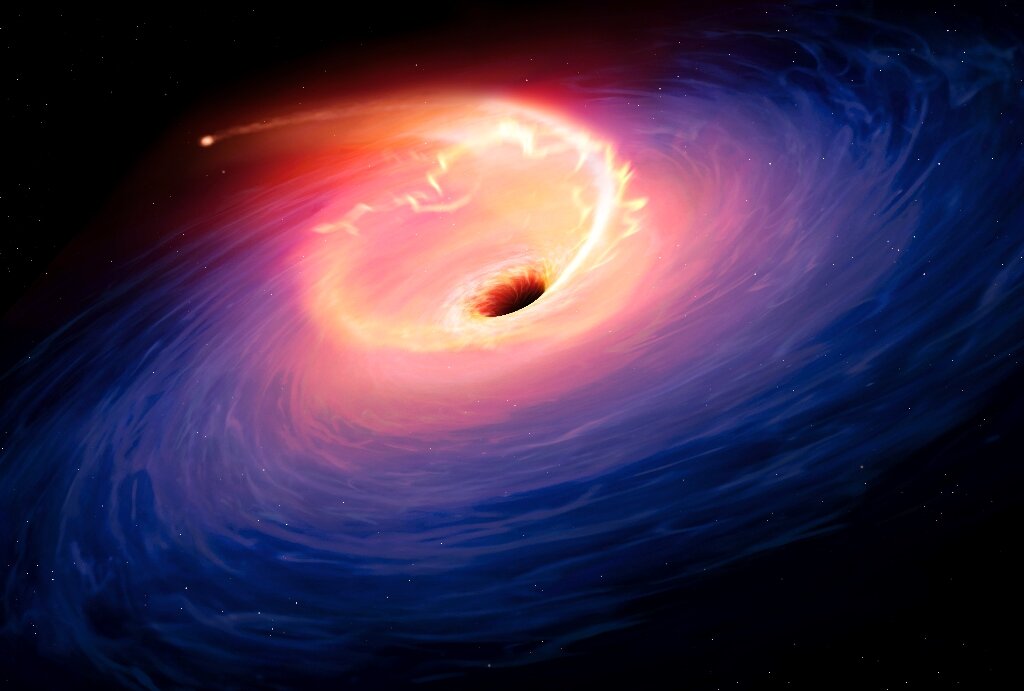
A team of astronomers led by researchers at the University of Southampton has uncovered the largest cosmic explosion ever witnessed. The explosion is more than ten times brighter than any known supernova. The research is published in Monthly Notices of the Royal Astronomical Society.
The explosion, known as AT2021lwx, has so far lasted for more than three years, compared to most supernovae which are only visibly bright for a few months. It took place nearly 8 billion light years ago, when the universe was around 6 billion years old, and is located in the constellation Vulpecula.
AT2021lwx was first detected in 2020 by the Zwicky Transient Facility in California, and was subsequently detected by the Asteroid Terrestrial-impact Last Alert System (ATLAS) based in Hawaii. These facilities survey the night sky to detect transient objects that rapidly change in brightness, indicating cosmic events such as supernovae, as well as finding asteroids and comets. Until now, the scale of the explosion has been unknown.

The team investigated the object further with several different telescopes: the Neil Gehrels Swift Observatory, the New Technology Telescope in Chile, and the Gran Telescopio Canarias in La Palma, Spain.
The researchers believe that the explosion is a result of a vast cloud of gas, possibly thousands of times larger than our sun, that has been violently disrupted by a supermassive black hole. Fragments of the cloud would have been swallowed up, sending shockwaves through its remnants, as well as into a large dusty doughnut-shaped formation surrounding the black hole. Such events are very rare and nothing on this scale has been witnessed before.
Last year, astronomers witnessed the brightest explosion on record – a gamma-ray burst known as GRB 221009A. While this was brighter than AT2021lwx, it lasted for just a fraction of the time, meaning the overall energy released by the AT2021lwx explosion is far greater. The physical size of the explosion is about 100 times larger than the entire solar system, and at its brightest, it was about 2 trillion times brighter than the Sun.
The only things in the universe that are as bright as AT2021lwx are quasars – supermassive black holes with a constant flow of gas falling onto them at high velocity.
There are different theories as to what could have caused such an explosion, but the Southampton-led team believe the most feasible explanation is an extremely large cloud of hydrogen gas or dust that has strayed from its orbit around the black hole and has been pulled in towards the centre of the system.
The team are now setting out to collect more data on the explosion – observing the object in different wavelengths, including X-rays, which could reveal the object’s temperature and what processes might be taking place at the surface. They will also carry out upgraded computational simulations to test if these match their theory of what caused the explosion.
“We came upon this by chance, as it was flagged by our search algorithm when we were searching for a type of supernova,” says Dr Philip Wiseman, Research Fellow at the University of Southampton, who led the research. “Most supernovae and tidal disruption events only last for a couple of months before fading away. For something to be bright for two plus years was immediately very unusual.”
He adds, “With new facilities, like the Vera Rubin Observatory’s Legacy Survey of Space and Time, coming online in the next few years, we are hoping to discover more events like this and learn more about them. It could be that these events, although extremely rare, are so energetic that they are key parts of how the centres of galaxies change over time.”
“Once you know the distance to the object and how bright it appears to us, you can calculate the brightness of the object at its source. Once we’d performed those calculations, we realised this is extremely bright,” says Professor Sebastian Hönig from the University of Southampton, a co-author of the research.
Professor Mark Sullivan, also of the University of Southampton and another co-author of the paper, explains: “With a quasar, we see the brightness flickering up and down over time. But looking back over a decade there was no detection of AT2021lwx, then it suddenly appeared as one of the most luminous things in the universe, which is unprecedented.”





